Creating a functional yet stylish kitchen interior can make a huge difference in the flow and feel of your home. With the right planning, you can balance aesthetics with functionality, creating a kitchen that’s both enjoyable to cook in and beautiful to look at. Here’s our guide to designing the perfect kitchen interior, focusing on layouts, color schemes, storage, and lighting to make the heart of your home shine.
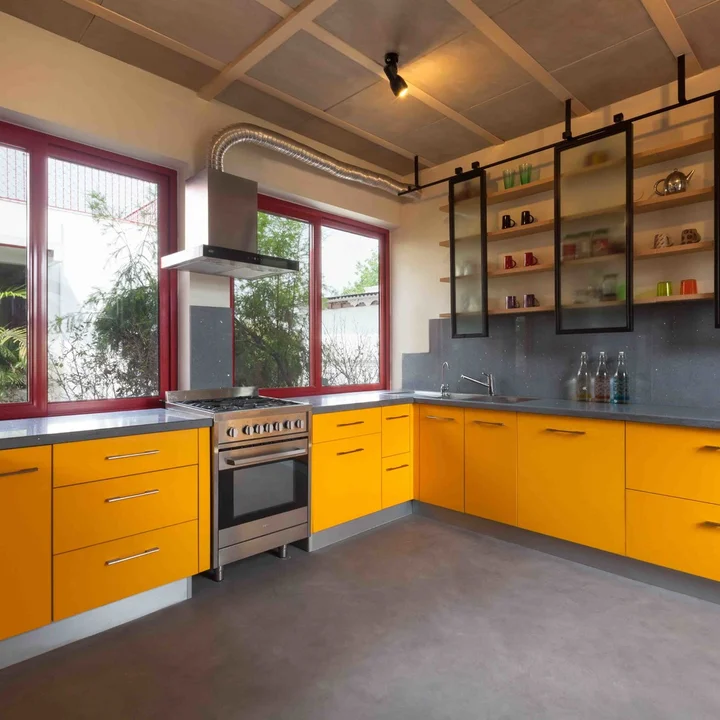
Prioritize Layout Planning for Optimal Functionality
The layout is one of the most important aspects of interior design for a kitchen. The most efficient kitchen interiors incorporate the ‘work triangle’ principle, arranging the sink, stove, and refrigerator in a triangular layout to enhance workflow and ease of movement.
Some common kitchen layouts include:
L-Shaped Layout: Great for open spaces, it allows flexibility and provides ample counter space.
U-Shaped Layout: Ideal for larger kitchens, it maximizes storage and counter areas.
Galley Layout: A compact option, perfect for smaller spaces, that offers an efficient and straightforward layout.
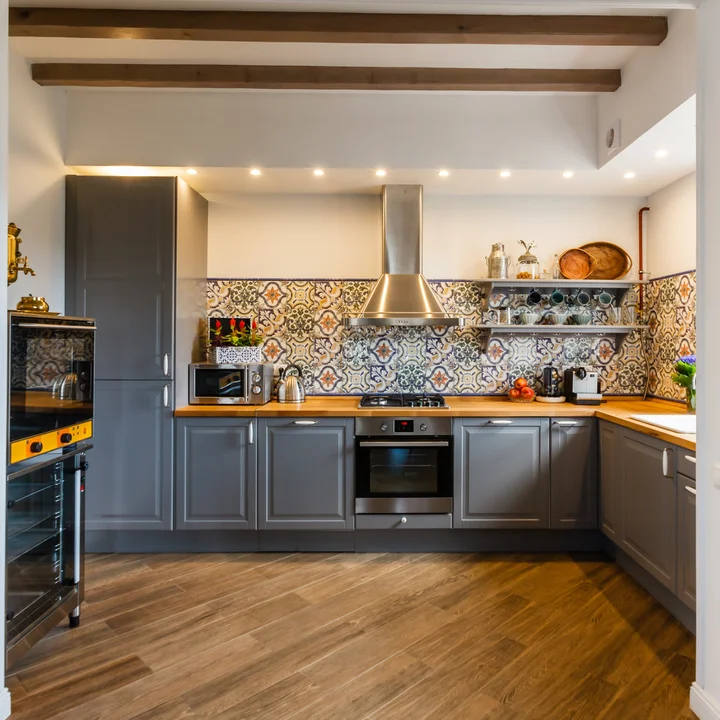
Choose Functional and Stylish Storage Solutions
In interior design for kitchens, storage is crucial. Well-designed storage solutions keep your kitchen organized and visually appealing.
Some effective storage ideas include:
Cabinets and Drawers: opt for spacious cabinets and deep drawers for easy access.
Pull-Out Shelves and Baskets: These make reaching items at the back of cabinets easier.
Open Shelving: Adds an airy feel to your kitchen while providing easy access to frequently used items.
The right storage solutions not only help keep the kitchen tidy but also enhance the overall design by allowing you to showcase some items while hiding clutter.
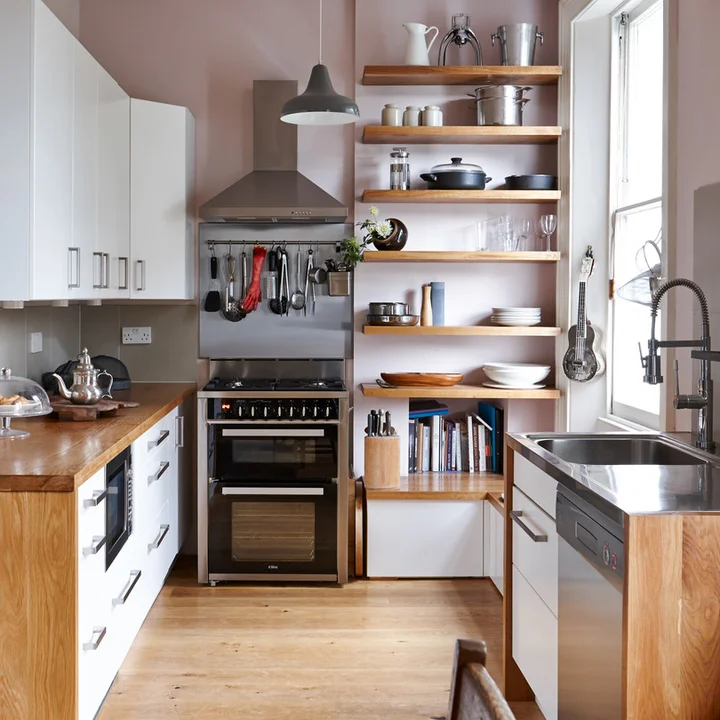
Select Durable, High-Quality Countertops
Countertops are central to both the functionality and look of a kitchen.
Popular choices include:
Quartz: Known for durability and easy maintenance, perfect for busy kitchens.
Granite: Offers a natural stone look, adding elegance to the kitchen.
Butcher Block: Adds warmth and a rustic feel, ideal for farmhouse-style kitchens.
Choose a countertop that complements your kitchen’s interior design while meeting your cooking needs.
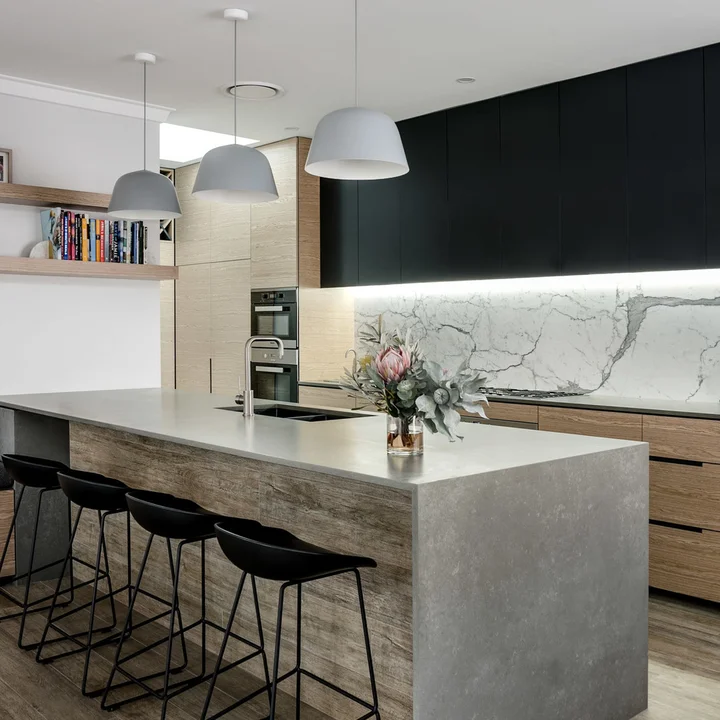
Use Lighting to Create an Inviting Ambiance
Proper lighting enhances the functionality and atmosphere of your kitchen interior design. A well-lit kitchen requires a mix of lighting types:
Ambient Lighting: Ensures general visibility, often through ceiling fixtures.
Task Lighting: Illuminates specific areas like countertops, islands, or the sink.
Accent Lighting: Adds style by highlighting design features or creating a cozy feel.
Consider installing under-cabinet lighting for additional task lighting, or add pendant lights over an island for a stylish focal point.
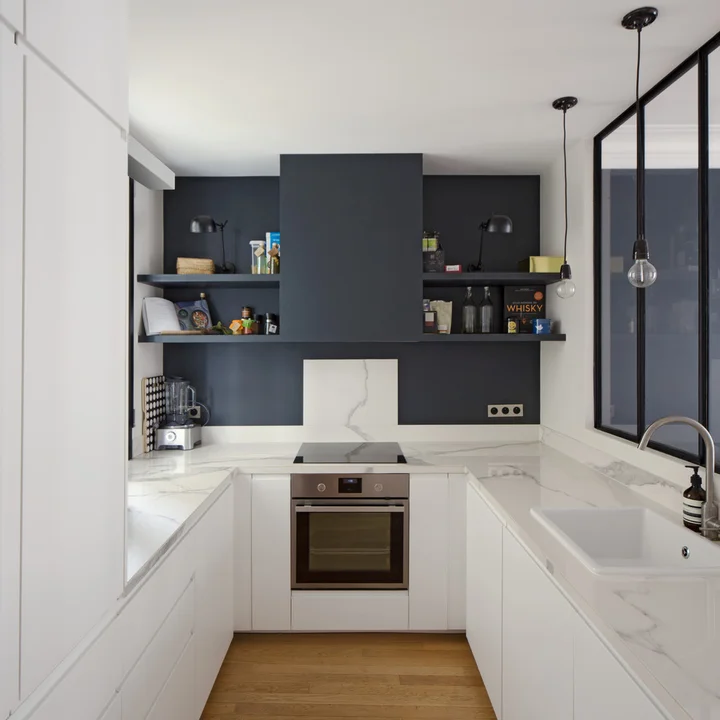
Pick a Color Scheme to Reflect Your Style
The color scheme you choose impacts the mood and perceived size of the kitchen. Light colors such as whites and pastels open up a space, making it feel larger and brighter, while dark colors add a warm, cozy feel. Some tips include:
Neutral Tones: White, beige, and gray create a clean, timeless look.
Bold Accents: Add character with pops of color through accessories or backsplashes.
Natural Materials: Incorporate wood finishes or stone accents to add texture and depth.
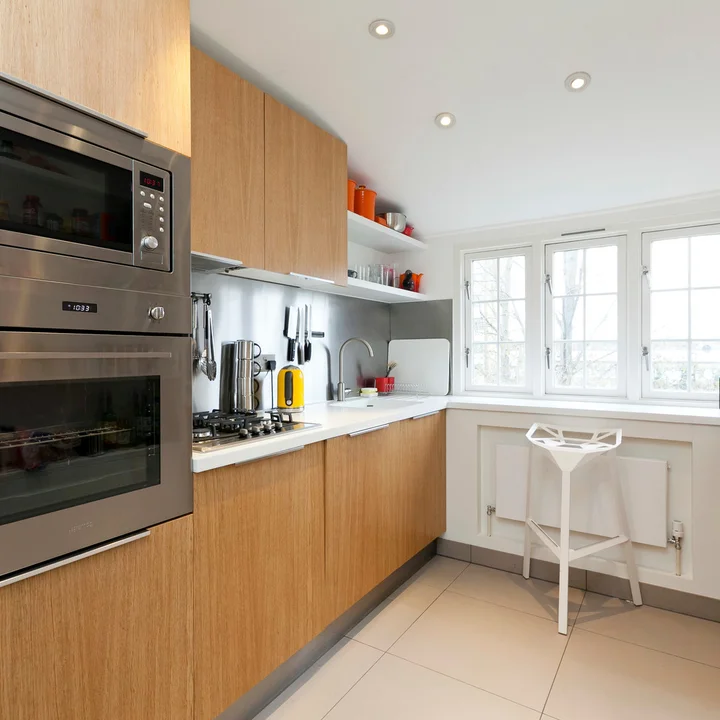
Focus on Flooring That’s Both Stylish and Functional
Kitchen flooring should be durable and easy to clean.
Popular options include:
Ceramic Tile: Highly durable, available in various colors and styles.
Vinyl: Water-resistant and budget-friendly, with a variety of designs.
Hardwood: Adds warmth and complements different design styles, though it may require extra care.
Choose flooring that suits your interior design and lifestyle, ensuring it can withstand spills, stains, and heavy foot traffic.
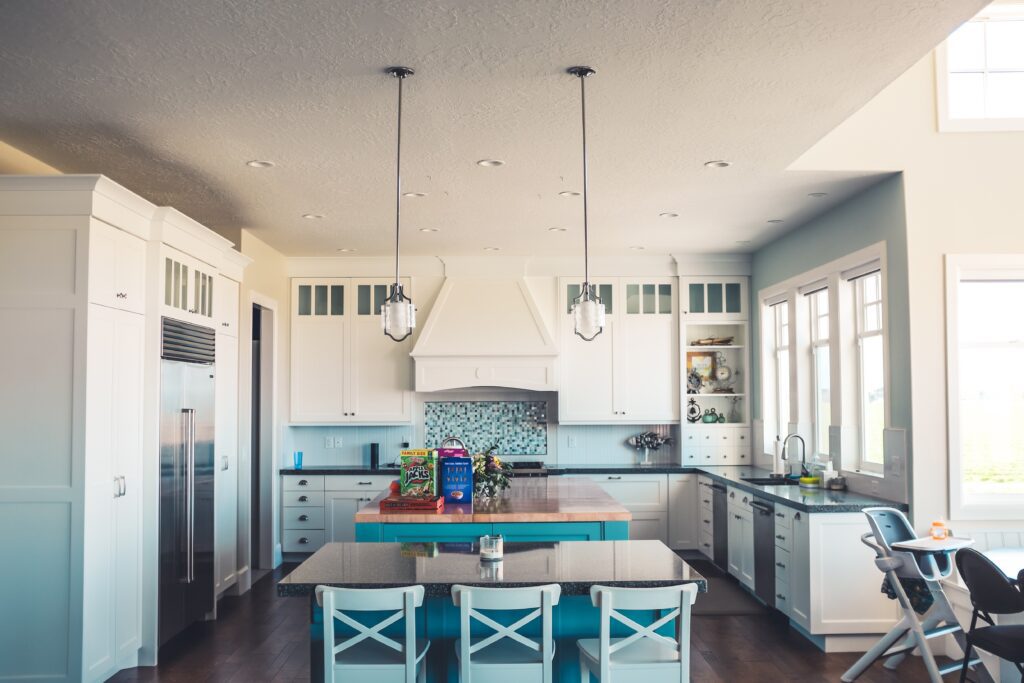
Invest in High-Quality, Modern Appliances
Appliances are a vital part of kitchen interior design and can influence its overall style. Stainless steel appliances add a modern, polished look, while integrated appliances blend seamlessly with cabinetry, creating a streamlined appearance. Smart appliances are also a popular choice, offering convenience and energy efficiency.
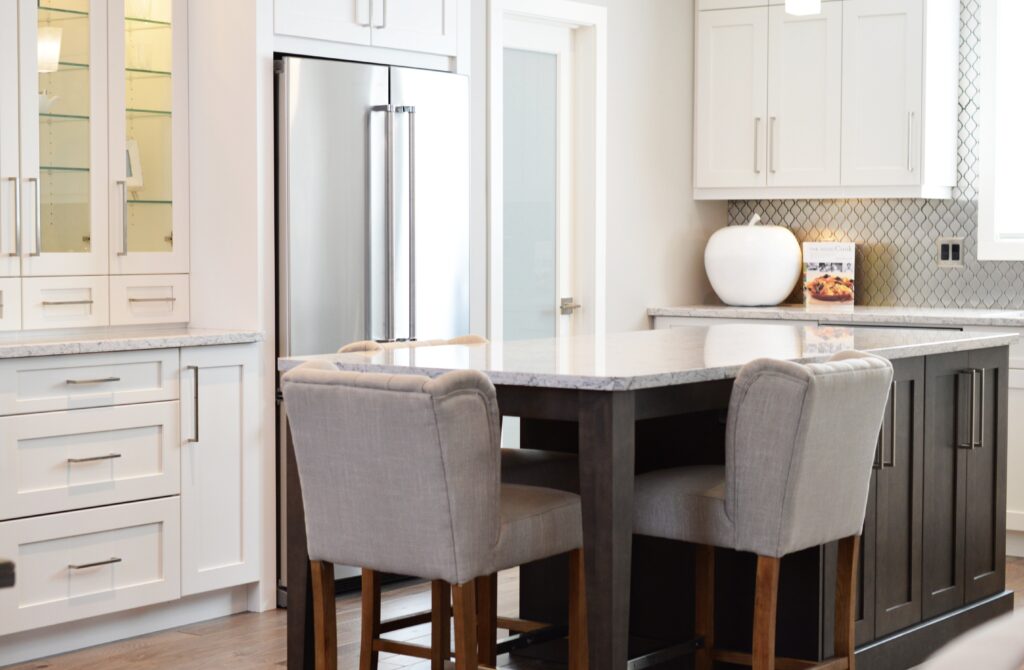
Add a Touch of Personal Style
The final touch to any kitchen interior design is personalization. Add unique accessories, like a vintage clock, colorful dishware, or a statement backsplash, to give the space personality. Even small additions like fresh plants, stylish bar stools, or decorative trays can make a big difference.
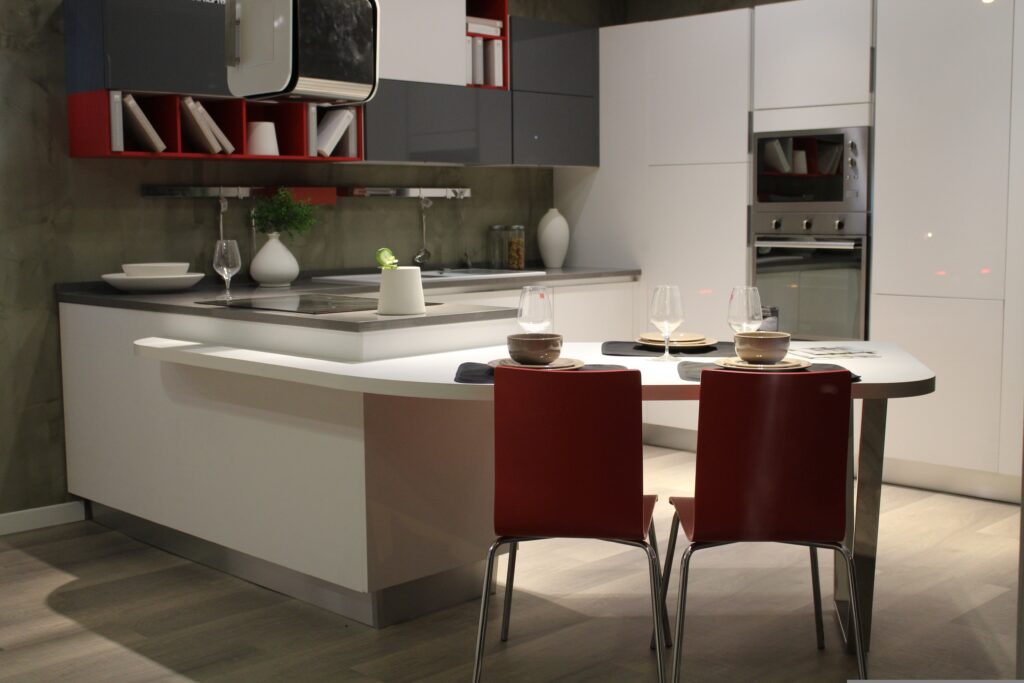
Optimize Space with a Kitchen Island
If space allows, a kitchen island can enhance your kitchen’s functionality and style. It adds valuable counter space for meal prep, extra storage, and a welcoming spot for family and friends to gather. You can add bar stools for casual dining or even install a sink or cooktop for added functionality.
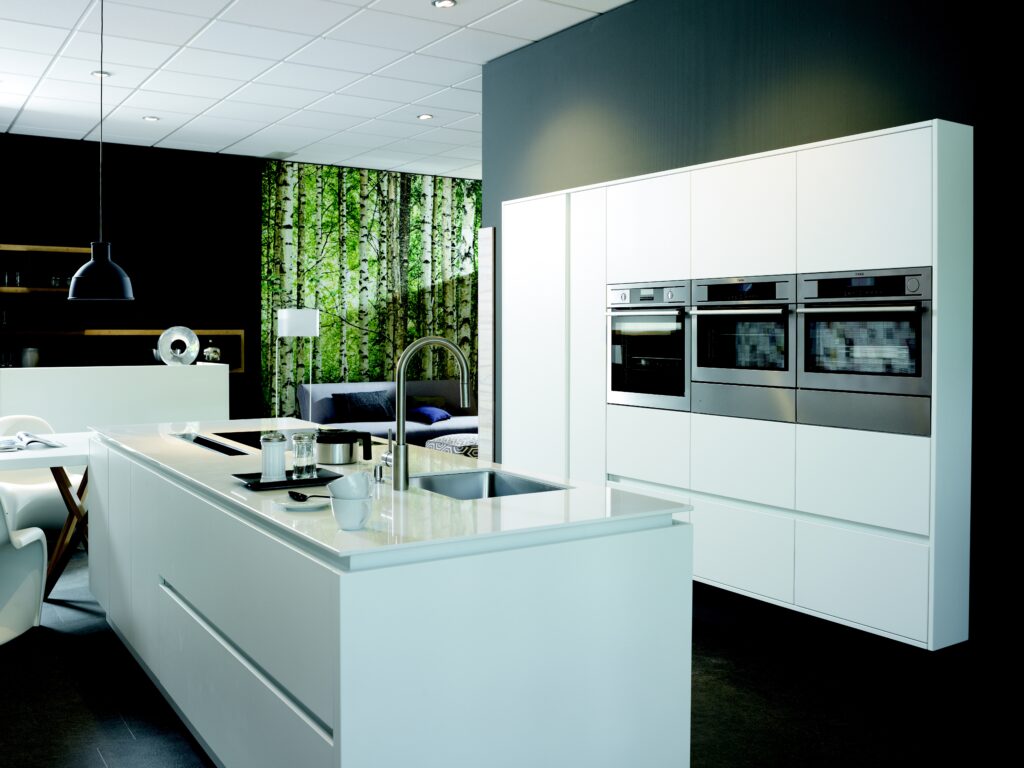
Work with an Interior Designer for Professional Guidance
For the best results, consider consulting a professional in interior design for kitchens. An expert can provide tailored guidance, helping you choose the best layout, materials, and finishes to suit your style and needs. Whether you’re remodeling or designing a new kitchen, an interior designer can bring your vision to life.
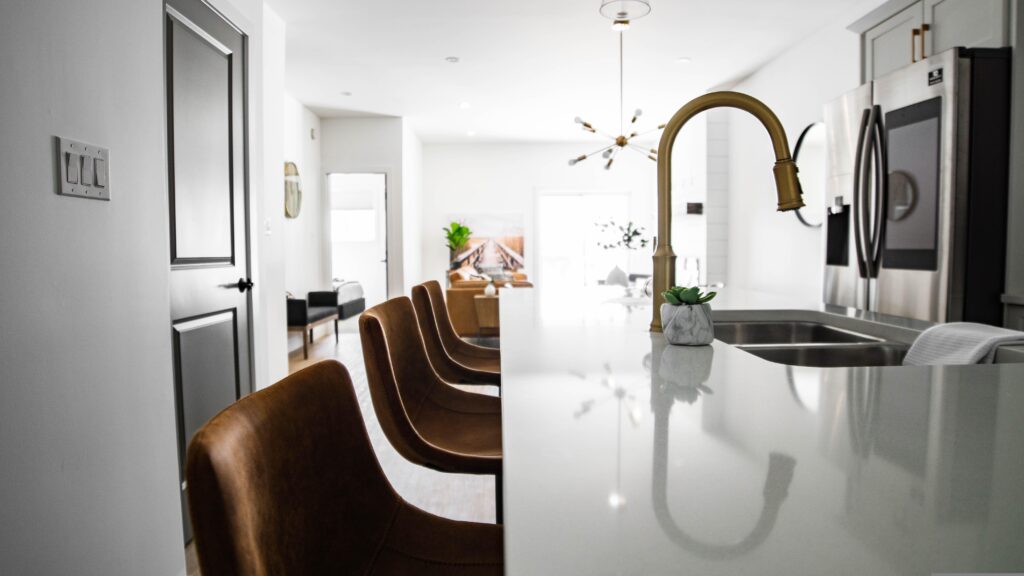
Conclusion
Designing a kitchen that’s both functional and stylish requires careful planning. By focusing on layout, storage, countertops, lighting, and personal touches, you can create a kitchen interior that’s efficient, beautiful, and uniquely yours. Embrace these tips to transform your kitchen into a space that combines style with practicality, making it the heart of your home.
